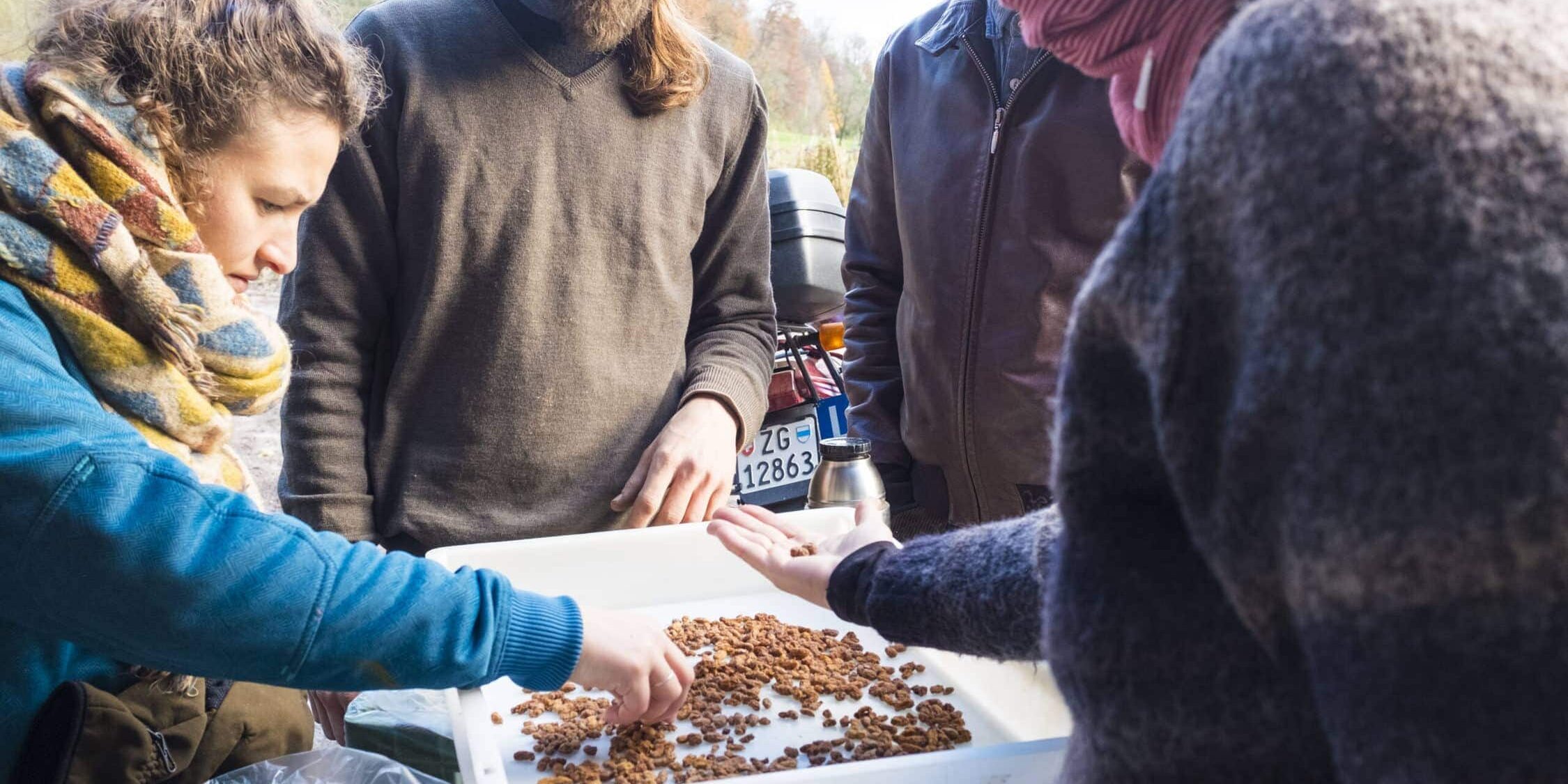StadtLandVelo at SlowGrow

StadtLandVelo at Slow Grow
A trip to regenerative agriculture or three friends on a stroll and a little girl in a trailer

The November sun is low and the autumn sky is glowing as we set off for Mönchaltorf. We leisurely ride the kilometers through the cultivated landscape between Lake Zurich and Lake Greifensee. Our destination is Slow Grow - an alchemy workshop for regenerative agriculture. Wondering what that's all about? It refers to an agricultural cultivation method that protects the soil. Humus formation is the magic word. We need it now more than ever, as we only have 60 harvests left, according to a recent United Nations study.
The three of us are united by our love of bicycles and vibrant and diverse agriculture. Leander is a co-founder of the Boimig association and a passionate advocate of agroforestry systems, while Sabrina looks after the permaculture area at Birchhof and is the initiator of Permaschmaus. Among other things, I am committed to small-scale and solidarity-based agriculture at Grünhölzli. Our colleagues from Crowd Container are on site a little earlier.
Our host is Salomon and his welcome is warm and uncomplicated. He welcomes us and we quickly set the lunch table with home-made, home-grown or salvaged food. The yacon root comes hot out of the oven and we are amazed at this exotic tuber, which is grown at Slow Grow - for the catering industry.
It is this rebellious curiosity paired with radical care for local biodiversity and humus formation, which Matthias - the founder of Slow Grow - describes as the world's most important resource, that fascinates us. Living soils need a mulch cover, whether leaves, wood chippings or reeds, there are no limits to the imagination. Before the drainage of the wetlands around Greifensee began 150 years ago, the area was traditionally known for its reed biotopes. Nowadays, these areas are extensively cultivated by farmers and tested as mulch biomass for Slow Grow, among other things.
The farm cultivates around 15 hectares of land, the plots are scattered around the neighborhood. Crops are grown cross-bedded, but with a system! Flowers, annual and perennial vegetables, edible tubers, mushrooms, high-stem fruit and cereals.
We harvested and sorted tiger nuts that day, but we actually had a cozy time thanks to the hard-working field mice. They diligently stash the nodules of the plant in their burrows as a winter supply - underground chambers just waiting to be emptied. Tigernuts are inconspicuous energy power plants that are in no way inferior to their above-ground namesakes in terms of taste and aroma. They are further processed for the food service industry as puree, flour and flakes. In this way, production cycles are closed at Slow Grow, as they work closely with the Jakob restaurant and BachserMärt. In addition, the vegetable crates are transported to their destinations using climate-friendly transportation (SBB, electric bikes).
At Slow Grow, everything on the Market Garden site is done by hand and the tractor is rarely used on the field. Farms like this are bringing about a paradigm shift in agriculture - reducing the use of fossil fuels to a minimum and storing CO2 in the soil as humus. Often the best solutions are right under our feet.
We are allowed to look around the storeroom: Oca - in every conceivable color, pumpkins - artfully draped on the shelves like a Dutch still life. Samuel tells us that one of the volunteers is a trained designer. In general, the project thrives on the many helping hands and talents of the volunteers. If you would like to get to grips with (regenerative) agriculture and lend a hand in the fields yourself, you should ask Matthias or Salomon directly or simply take part in the next StadtLandVelo excursion, the events are always published on Facebook - it's worth it!
Dessi, 20.12.2019

Thank you for this exciting report. I couldn't be there, but I've been to the field at slowgrow several times.
Much has been written about Matthias, but never before has it been so aptly summarized as here: "It is this rebellious curiosity paired with radical care for local biodiversity and for humus cultivation".